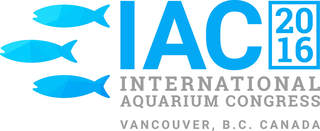Conservation Outreach Abstracts
|
The Remarkable Rise and
Influence of Ocean Optimism: Part I – An Overview Elin Kelsey, Elin Kelsey & Company Watch Video (Login required) Full Abstract
At IAC 2012, Elin Kelsey’s keynote challenged delegates to move beyond “doom and gloom” and create a torrent of hope for conservation. And they did. In the past four years, we’ve been witnessing a remarkable rise in solutions-focused communications, including an #OceanOptimism twitter campaign that has already reached more than 60 million people just since World Ocean’s Day June 2014. Elin Kelsey will share what academics are learning about hope and emotional contagion and how the online spread of #OceanOptimism is influencing international science and conservation meetings, initiatives and institutions more broadly. She will share initial research findings about how teens in a new pilot teen conservation leadership program at the Monterey Bay Aquarium are using social media to engage other teens with the ocean, and solutions-based marine conservation campaigns. |
The Remarkable Rise and
Influence of Ocean Optimism: Part II – In Aquarium Education and Visitor Programmes Cynthia Vernon, Monterey Bay Aquarium Watch Video (Login required) Full Abstract
In this session, Cynthia Vernon will discuss how the Monterey Bay Aquarium is celebrating the recovery of Monterey Bay through a variety of programs and initiatives, including a new family theatrical program, “Turning the Tide,” that tells the story of various cultures that made a living from Monterey Bay and how it returned to a healthy system. She will also discuss the global reach of “Big Blue Live” a 3-night live event that aired on PBS and BBC, and used a range of social media to engage people with the once endangered, now thriving ecosystem of Monterey Bay. |
The Remarkable Rise and
Influence of Ocean Optimism: Part III – In Field Conservation Programmes Heather Koldewey, Zoological Society of London Watch Video (Login required) Full Abstract
If marine conservation is truly important then why is it such a low priority for most people and bottom of the political agenda? Is the conservation community failing in selling the conservation message to the general public? A growing body of research that indicates that many people – especially children – feel anxious or hopeless about the state of the planet and their ability to effect positive change. Unfortunately, environmental narratives - both mainstream media and scientific - are focused on “doom and gloom” stories, which frighten, disempower and disengage people. Mistakenly, the conservation community often buys into this approach, in the belief that more information about how bad things are will spur people to action. This talk will explore how we might adopt different, positive and hopeful ways to engage people in marine conservation, leading to changes in behaviour and a more sustainable relationship with the ocean. In this context, a series of ‘ocean optimism’ case studies based on my own personal experiences and projects I work on will be presented. Examples will include a) Project Seahorse www.projectseahorse.org, which was co-founded by the author and is now recognised as the world’s leading authority on seahorses; b) the challenges and positive impacts of establishing marine protected areas around the world; b) Net-Works, an award-winning project that has developed a novel community-based supply chain for discarded fishing nets that are recycled into carpet tiles (with Interface Inc. www.net-works.com) addressing issues of marine debris and poverty alleviation in coastal communities, and c) Project Ocean - retail activism in action, an innovative and ground-breaking partnership between the luxury London department store, Selfridges and ZSL to bring ocean conservation to new audiences and change consumer buying habits http:// www.selfridges.com/content/project-ocean. |
|
A New Approach for Increasing Conservation Impact of U.S. Aquariums
Aimee David, Monterey Bay Aquarium Watch Video (Login required) Full Abstract
Aquariums enjoy high visibility and support across large, diverse audiences for our “attraction” and “authority” brands. We offer our visitors world-class experiences with live animal exhibits, and we are respected among the broader public and decision-makers alike for our science, conservation, and education authority. These attributes set us apart from other ocean conservation actors and present opportunities for aquariums to add value to a range of conservation efforts, including policy change, at the community, state, national and even international levels. Recent market research shows that our audiences not only like aquariums taking conservation action, they expect it. The new Aquarium Conservation Partnership was launched in January 2016 as a two-year pilot project designed to test the collective impact of U.S. aquariums in advancing ocean and freshwater conservation policy. The idea was hatched and developed by Monterey Bay Aquarium, Shedd Aquarium, and National Aquarium in 2015. Since then, 15 additional aquariums have joined the ACP, committing to implement a 2016-17 Conservation Action Agenda with the priority goal of reducing the sources of ocean plastic pollution, in addition to other action areas including promoting sustainable fisheries and aquaculture, advancing new protected areas, and improving shark conservation. If successful, by the end of 2017, the ACP will have increased aquariums’ capacity to meaningfully influence conservation policy, and in so doing, strengthen our individual conservation brands. |

